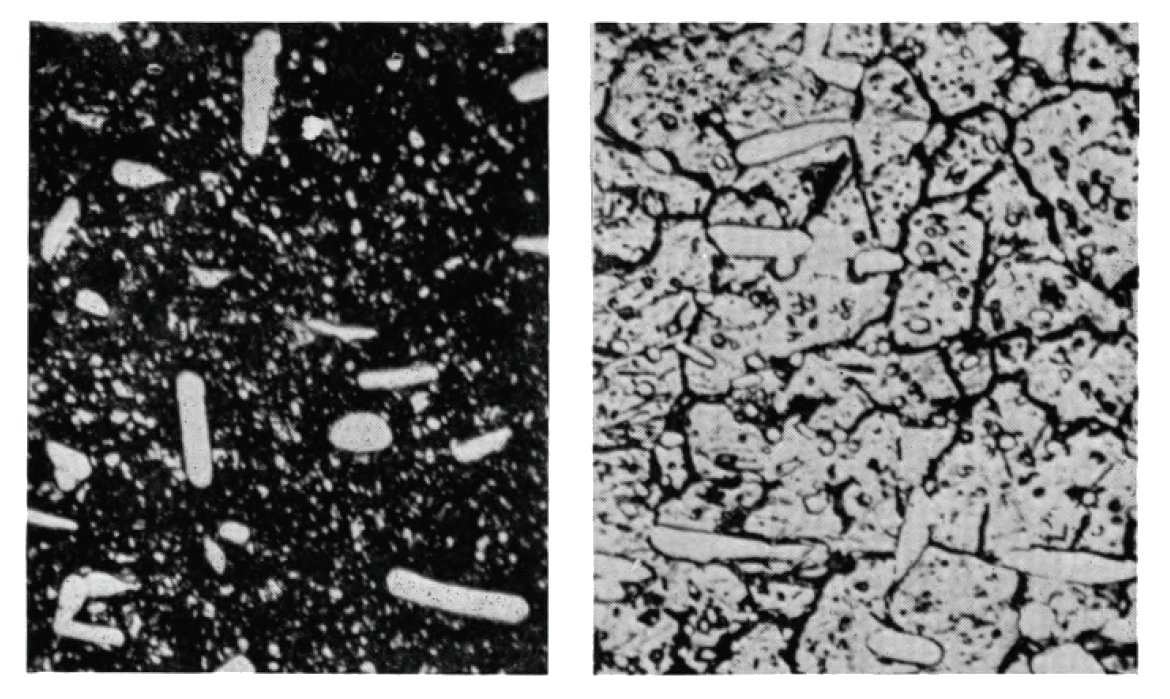
Alphabetical Index
Keyword Search
Casting Defects
Ingot Defects
Slab Defects
Drawing Defects
Forging Defects
Rolling Defects
Bearing Defects
Coating Defects
Corrosion defects
Fractography
Heat Treatment Defects
Machining Defects
Other Defects
Pipeline Defects
Polishing Defects
Rail Defects
Tool Steel Defects
Welding Defects
Internal Defects
Surface Defects
Internal + Surface Defects
Contact Us
Help
Home
Premature tempering accounted for
the cracking during treatment of this
21-in.-OD ring die - Tool steels - Fractography - Heat treatment defects

Figure 1: Premature tempering accounted for
the cracking during treatment of this
21-in.-OD ring die, a portion of which
is illustrated. Made of high-carbon,
high-chromium tool steel, it was apparently much hotter than 200 F when
the air-quench was halted. The die
was put into the tempering furnace
before the hardening transformation had progressed appreciably. In this grade of steel,
such transformation does not even begin until it has cooled to about 400 F.
The temperature reached in tempering, about 925 F, does not transform this steel readily,
so it was still unhardened when the tempering operation was completed. Cooling in air
following removal from the tempering furnace again started the hardening transformation, but the die was then water-cooled—a much too drastic procedure. The intent wasto cool it so that it could be handled for hardness testing. Stresses were set up and cracking
resulted.
If this die had not been water-cooled following the temper, but had been allowed to
cool to room temperature in air, and had then been re-tempered, it is probable that no
trouble would have occurred.
The original error, of course, was removal of the die from the quench too soon. The second error was cooling in water.
A double temper would have corrected the trouble caused by the original error.
Microscopic examination furnished the clue which brought to light the faulty procedure.
Note the microstructures on Fig. 2.

Figure 2: Left: Normal microstructure (7O0x magnification) of hardened-and-tempered high-carbon, high-chromium steel showing carbides in a tempered martensitic matrix. Right: Structure of ring die shown on Fig. 1. This structure showing carbides in untempered
martcnsitic matrix, is typical of as-quenched steel of this grade and indicates that the
die did not respond to tempering because of the incomplete quench.
Defect name: Cracks
Record No.: 2899
Type of defect (Internal/Surface): Internal, surface
Defect classification: Fractography, heat treatment defects
Steel name: Tool steel
Steel composition in weight %: No data.
Note: No data.
Reference: Not shown in this demonstration version.